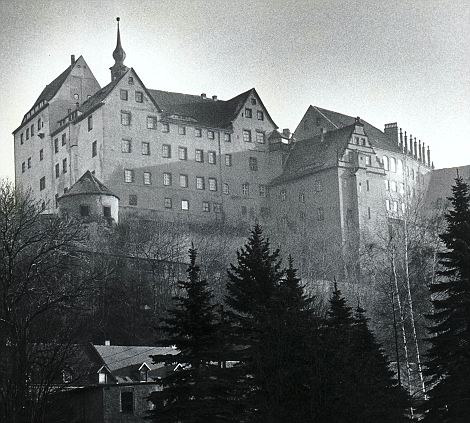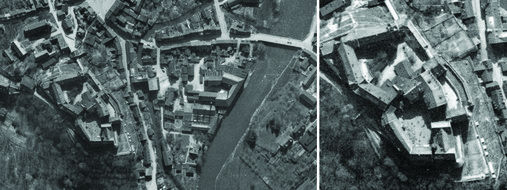Many officers who fought for the Allies during WWII were imprisoned in a German camp known as Colditz, the site of which was a large castle outside of Dresden in Germany. Several covert recon missions were carried out by the Allies who flew photoreconnaissance missions over the castle to discover the secrets of Colditz in an attempt to aid their captive brethren. As have many other documents as the result of recent attempts to educate the public worldwide, photographs taken by the flight crews have now been digitized and made available for online viewing.
These photographs captured not only the ground of Colditz, but also the wake of destruction caused by fighting in the war. One photo even shows the results of Baltic air raids committed by the Allies against the Axis. The air raid in question, known as Operation Crossbow, was made in an attempt to foil German plans to unleash new experimental weapons in the war. In other words, the photo conveys the use of destruction to prevent destruction.
The crews of the recon teams that captured the photos in the Baltics and at Colditz were not flying combat planes, yet persevered for the benefit of their troops. They captured destruction and despair, the vast lands scarred by battle during D-day and the slave hands marred by oppression in the work camps. Unfortunately, so many locations could not have been photographed by just one plane; several of the recon crews, despite efforts to camouflage their crafts by painting them with colors of the sky, were spotted and shot down by the enemy.
These sacrifices were not in vain. The airmen who made it back with their intelligence provided integral data which was used by military strategists. While the storming of Normandy was tragic, it may have been even more so if not for such intelligence. The photographs taken by such airmen were analyzed by archaeological teams as well as other highly studious personalities to put together the best possible plans for their course of action during the war. One such academic was Sarah Churchill, daughter of the British wartime prime minister, the Mail Online reports.
Literally millions of photographs were taken during WWII for such intelligence purposes. The photos covered strategic positions at Normandy, the V1 bomb factories, River Kwai, and several internment camps including Colditz, where slave labor served not only the purposes of oppression, but also the benefit of the Nazi war effort. Digitizing the entirety of the database, known as Tara, will be no easy task, but the time-consuming job is being undertaken as a means of paying tribute to the pilots who lost their lives to save so many more.
//

